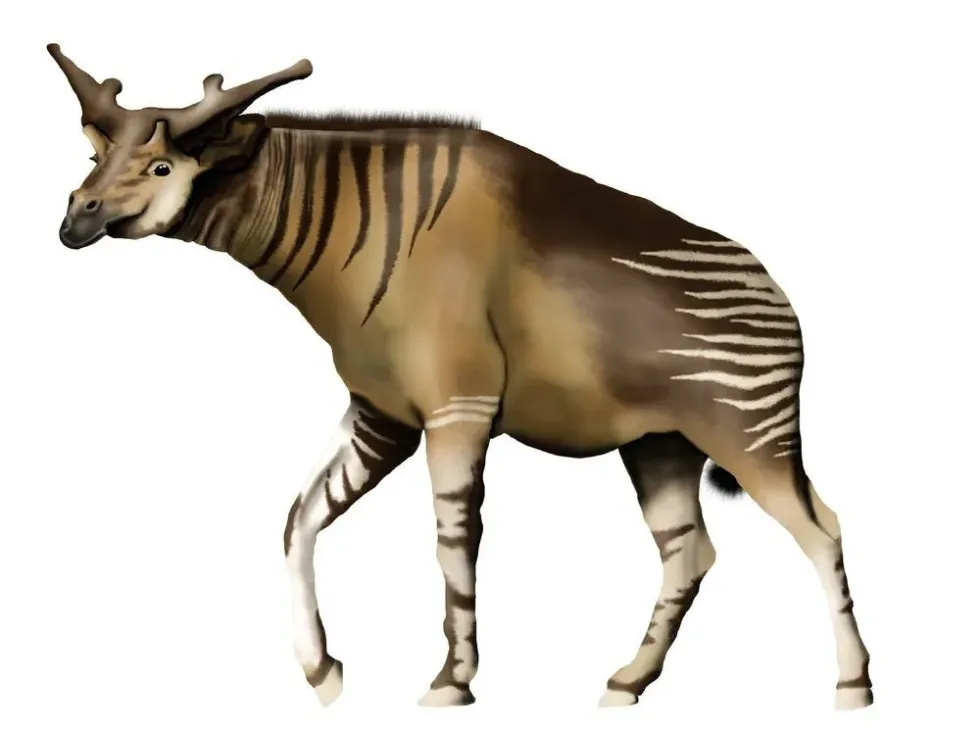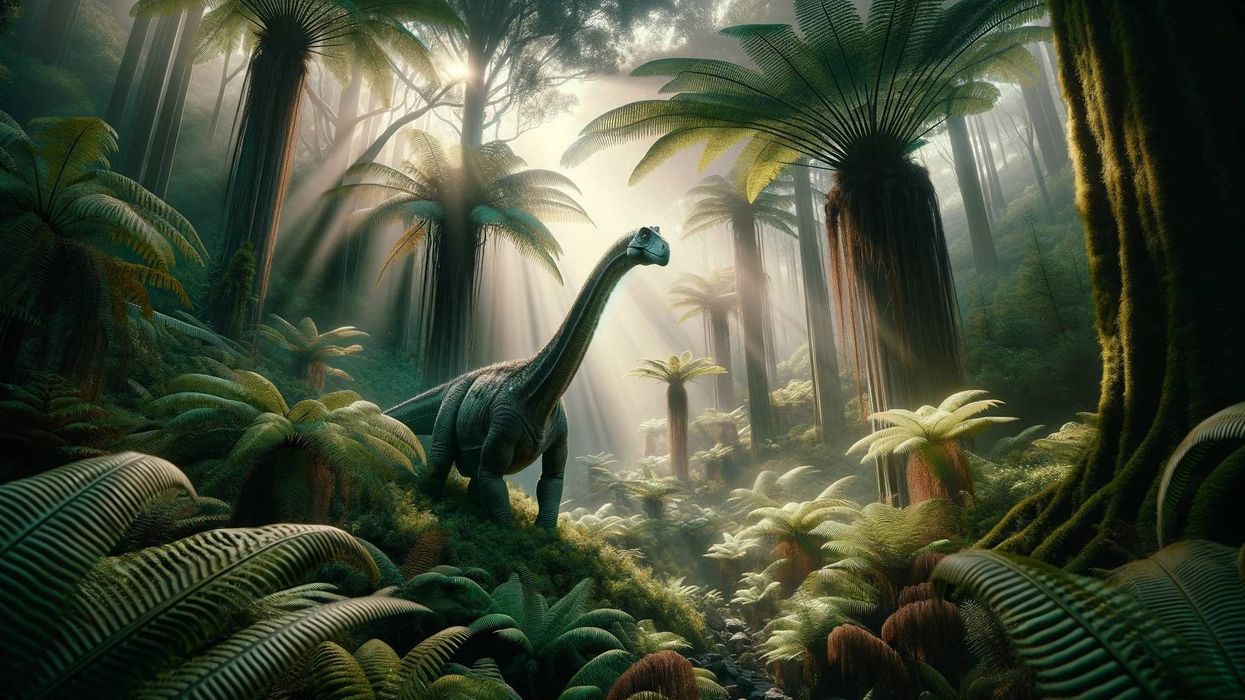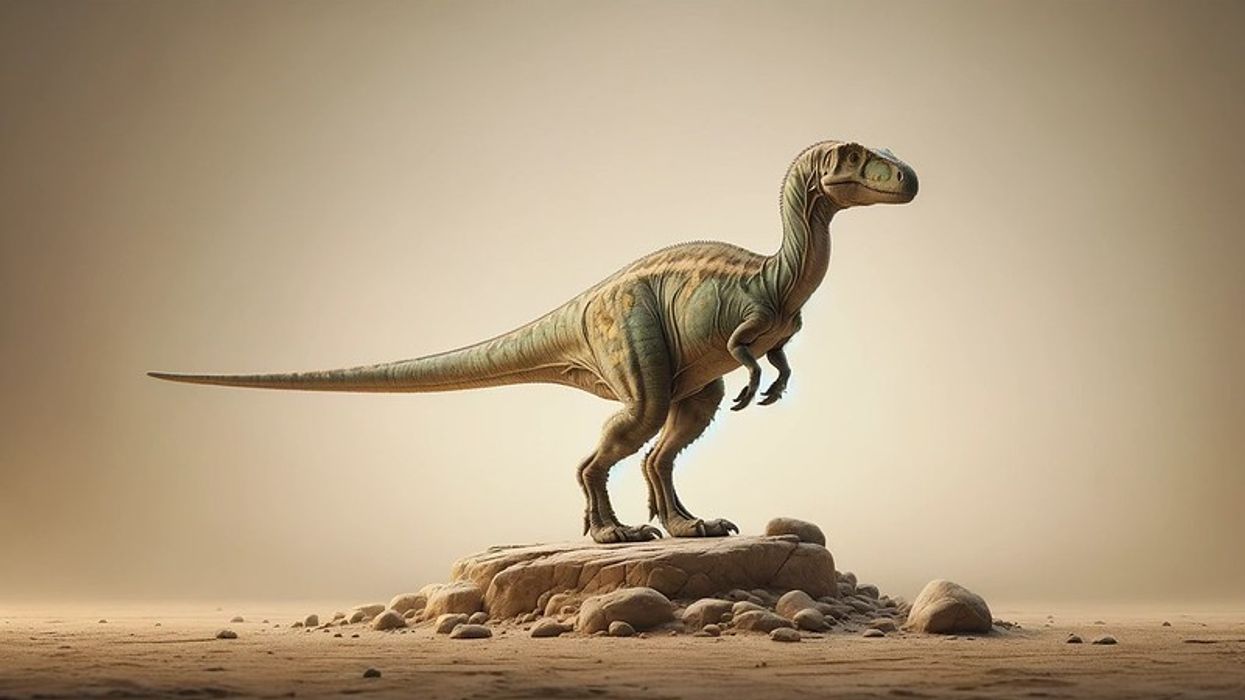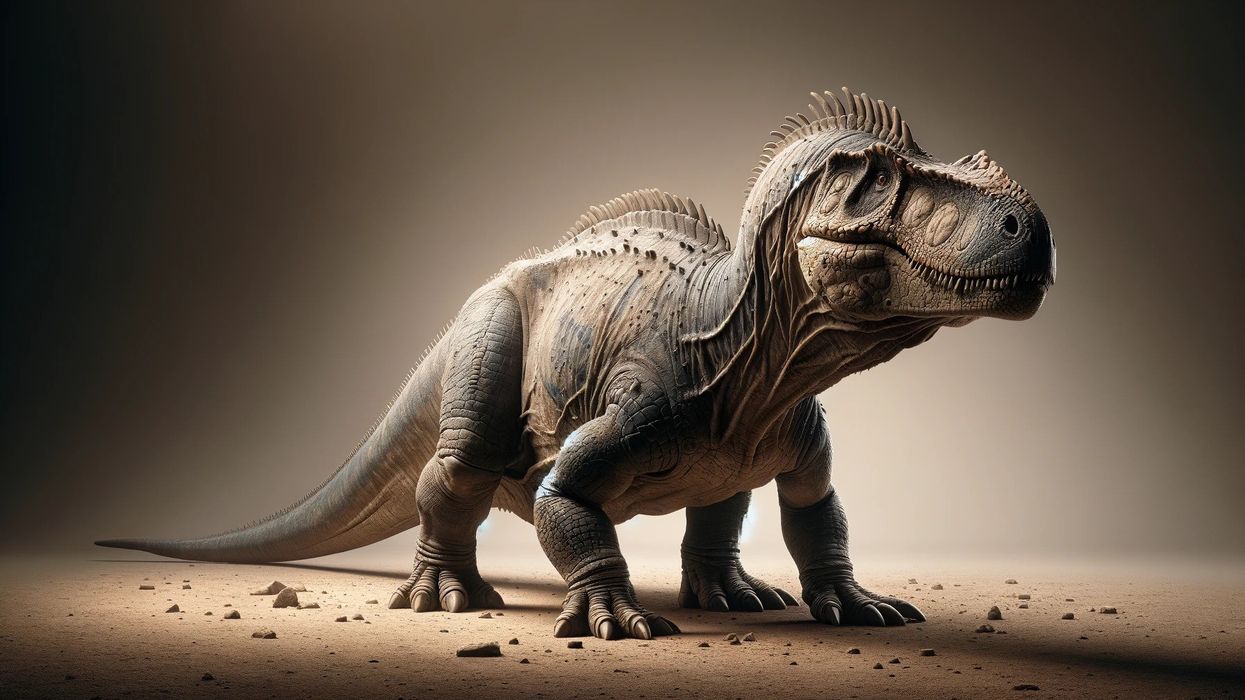Sivatherium was a genus of animals that are most likely to remind you of a cross between a modern-day moose and a giraffe. Many species of this beautiful genus have been recognized by paleontologists, while Sivatherium giganteum is the type species.
The fossil remains of this tall creature have been recovered from parts of India and Africa, which suggests that it was not entirely endemic.
The height of these animals at the shoulders was quite little, as compared to when the height of the ossicones was taken into account. This gives us a fair idea of the immense weight that this beast carried on its shoulders!
For more relatable content, check out Palaeosaurus facts and Ornithosuchus facts.
Sivatherium Interesting Facts
Was the Sivatherium a dinosaur?
The Sivatherium is classified as a giraffid prehistoric animal and not a dinosaur since these extinct moose-like animals lived way after dinosaurs had been wiped off the face of the earth.
How do you pronounce 'Sivatherium'?
The name of this animal is pronounced as 'see-vah-fay-ree-um'.
What type of prehistoric animal was a Sivatherium?
This prehistoric animal is most closely related to a present-day giraffe, although, the horns or ossicones may also let someone think of this animal as being moose-like. This giraffid animal, in fact, through fossil remains, was also initially thought of as an elephant.
Although, the theory of the Sivatherium being an elephant was debunked after the long neck and large ossicones were discovered.
In which geological period did the Sivatherium live?
The geological period during which Sivetherium is known to have existed in the world is the late Miocene to the early Pleistocene period. If you happen to be wondering how long ago that would have been, you will most definitely be astonished to know that these giraffe-like animals existed no less than 7 million years ago!
When did the Sivatherium become extinct?
The exact timeline as to when the Suvatherium genus and its species became extinct is not exactly known. However, if these animals did survive throughout the early Pleistocene age, it can be assumed that they became extinct around 700,000 years ago!
In early Pliocene Africa, however, data gathered from the fossils suggest that this beast would have been herbivorous.
Where did a Sivatherium live?
The habitat of the Sivatherium genus is estimated to have consisted of forests and woodlands that may have been present in the regions that they are known to have inhabited. Such an environment would be ideal for these animals because it would make sure that the herbivorous diet of these animals was satisfied.
What was a Sivatherium's habitat?
The fossil remains of this animal, which is also the largest known giraffid, have been found in places such as Africa and India. In India, particularly, the fossil remains have been found near the foothills of mountains, which suggests that such forests and woodlands would have been ideal for the genus and its many recognized species.
Who did a Sivatherium live with?
It is assumed through research and relevant data that these animals preferred to live in small groups. Although like giraffes, these animals were hardly challenged or threatened by any possible predation, it was probably due to the herbivorous nature that they liked the company of related species.
Natural history, as well as the patterns visible in animals that continue to live on the planet, show that herbivores have always preferred to live in some form of the group - thereby acting as a testament to their amiable nature.
How long did a Sivatherium live?
There is no relevant data or research that would reveal the exact lifespan of this ruminant beast. Even though major aspects such as the body mass, habitat range, and geological period are revealed to us through modern science, there is hardly any description of the lifespan.
How did they reproduce?
The Sivatherium, which was most likely the largest animal of the time (late Miocene, early Pleistocene, early Pliocene), was a prehistoric mammal. This means that much like any human being, this animal would give birth to offspring.
Sivatherium Fun Facts
What did a Sivatherium look like?

The most magnificent feature of this animal from ancient history was the horns or ossicones that it had on its head. The Sivatherium also had a long neck, which would resemble a modern-day giraffe.
The Sivatherium also had somewhat long legs and horns that looked like antlers, giving it the most distinct and regal look!
How many bones did a Sivatherium have?
Since the search of the total skeletal figure of Sivatherium is still underway, there is not much information regarding the number of bones there may have been in the body.
The classification of this animal, however, would definitely be with animals that had a considerably larger number of bones - looking at the huge size and weight of the Sivatherium.
How did they communicate?
While we do not know how this moose-like giraffid ruminant communicated with the others of the genus, paleontologists such as John Hutchinson suggest that these ancestors of giraffes may have had a loud call. On the other hand, the horns or ossicones may have also served as a mode of communication within the genus or with related genera.
How big was a Sivatherium?
The height of the average Sivetherium is estimated to have been in the range of 7.2-9.8 ft (2.2-3 m). Such a range puts makes the height comparable to that of giraffes.
The type species, Sivatherium giganteum (Hugh Falconer and P.T. Cautley) is known to have been the tallest of all. At the shoulders, their height is estimated to have been around 7.2 ft (2.2 m).
Understandably, the size of the ossicones forms a large section of the height of these moose-like animals.
How fast could a Sivatherium move?
The average speed at which the Sivatherium genus could move is not known through any research. However, the fact that these animals were larger than a number of dinosaurs and the humongous weight and body mass tells us that locomotion would not have been a strong factor for these otherwise glorious animals.
How much did a Sivatherium weigh?
The average weight of these animals is estimated to have been around 880-1100 lb (400-500 kg). Recently gathered data shows that the average body mass, on the other hand, would be around 2760 lb (1250 kg).
What were the male and female names of the species?
There are no distinct names for the males and females of this genus from ancient Africa and India.
What would you call a baby Sivatherium?
The juvenile Sivatherium would be called a baby.
What did they eat?
The search for fossil remains has revealed pieces of evidence from the early Pliocene era in Africa that suggest that the classification of these large giraffids would be the herbivores of the age. It is hardly ironic that this animal not only looked like a giraffe but also had a similar diet!
If this genus were not extinct, it is most likely that it would be seen in search of nice foliage to feed on!
How aggressive were they?
Although the fact that this was the largest ruminant may make you think otherwise, it is highly unlikely that the Sivatherium would have been an aggressive creature. The large size of the beast and its horns should hardly have been a point of concern since this moose-like creature was herbivorous and very peaceful.
Did you know...
The horns of the Sivatherium were like the horns of the modern-day giraffes.
The modern-day moose and giraffes form the closest genera to these animals. Although, a giraffe would be much larger than a Sivatherium giganteum.
Sivatherium giganteum is the type species of the genus.
Why did the Sivatherium become extinct?
The Pleistocene era is estimated to have ended 0.012 million years ago, due to climatic changes. The same reason is estimated to have led to the extinction of the Sivatherium genus.
What do you mean by Sivatherium?
This creature was named by two paleontologists namely Hugh Falconer and P. T. Cautley. The name literally translates to 'Shiva's beast'. The word 'Siva' refers to the Hindu deity 'Shiva', and 'Therium' is adapted from Latin to mean 'beast'. The latter part of the name comes from the large head and body that the genus had.
Here at Kidadl, we have carefully created lots of interesting family-friendly prehistoric animal facts for everyone to discover! For more relatable content, check out these Metriorhynchus facts and Rhomaleosaurus facts for kids.
You can even occupy yourself at home by coloring in one of our free printable Sivatherium coloring pages.









